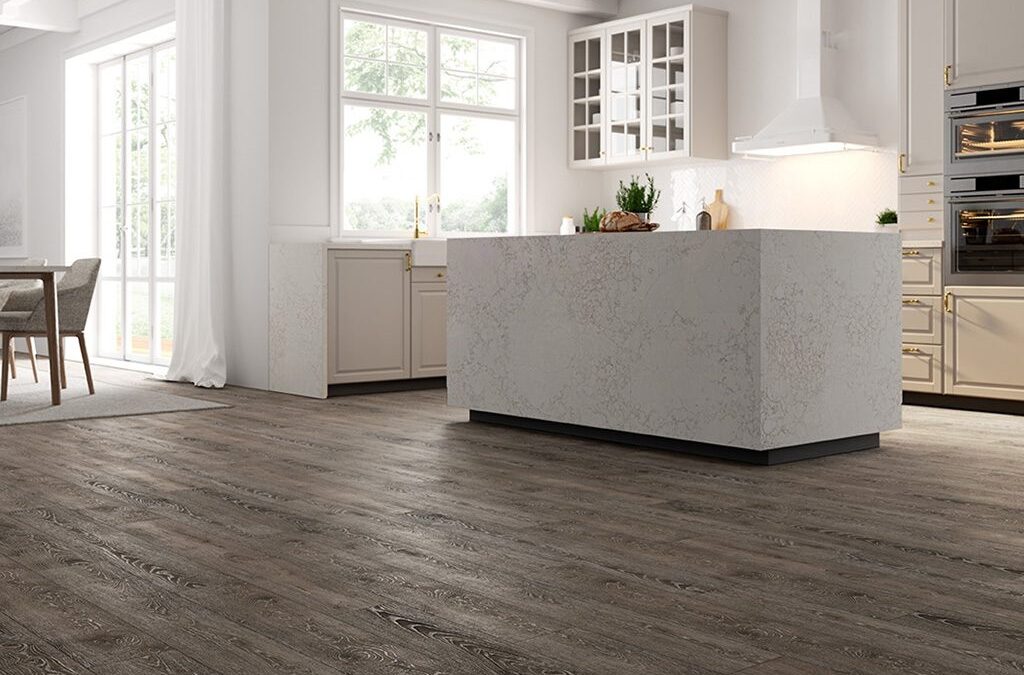The kitchen, often the hub of any home, experiences a constant bustle of activity. It’s the nerve center that keeps the family functioning smoothly and consequently endures significant foot traffic. When selecting a floor for your kitchen, durability is paramount to withstand the daily grind. Additionally, the chosen floor must be waterproof and stain-resistant to fend off the inevitable spills, splashes, and steam synonymous with cooking. A floor that is scratch resistant is also essential in order to endure the impact of pots, pans and other kitchen items that may fall to the floor. Moreover, ease of cleaning and maintenance is crucial to prevent the accumulation of food debris in the floor’s crevices.
In this article, we’ll explore the merits and drawbacks of seven excellent flooring options for your kitchen, alongside highlighting ones you should steer clear of.
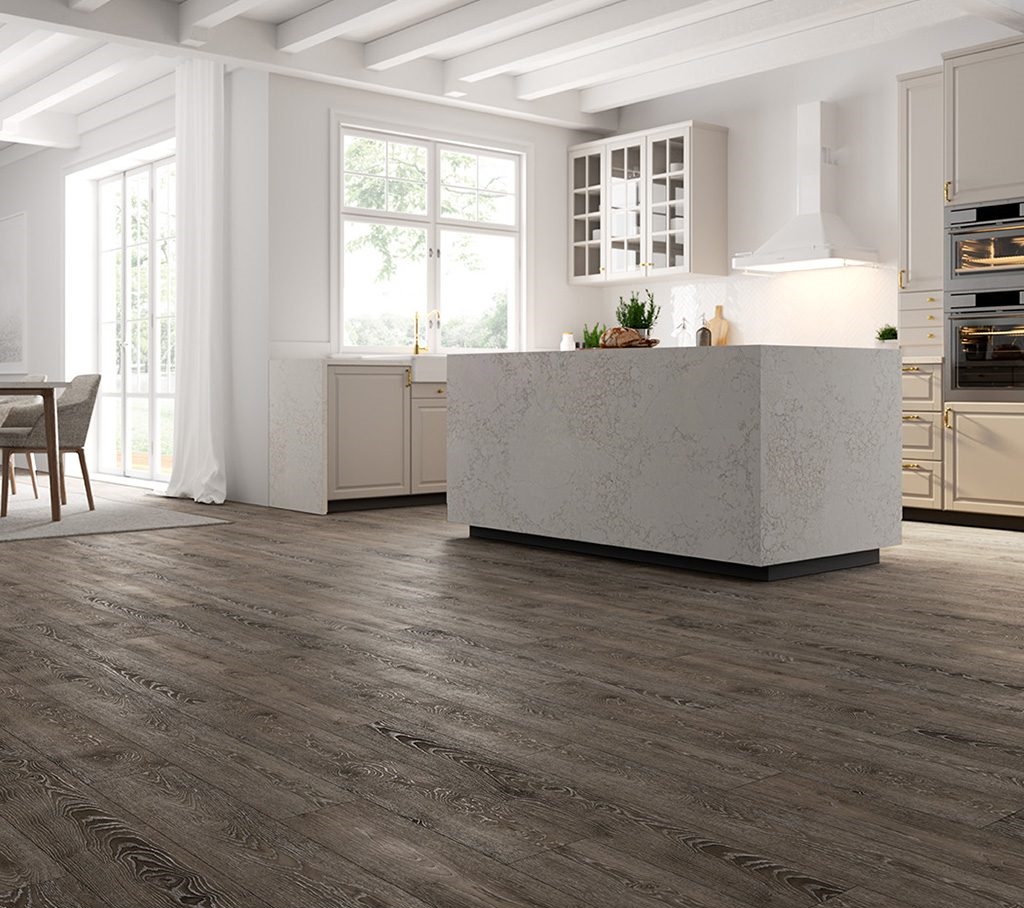
Best Flooring for a Kitchen
In this overview, we aim to provide you with insights into the top choices for kitchen flooring in 2024. We’ll delve into the pros and cons of engineered wood flooring, luxury vinyl tile (LVT), laminate, cork, concrete, tile, and linoleum.
Engineered Wood Flooring
Engineered wood flooring brings the charm and warmth of natural hardwood to your kitchen while offering enhanced durability and water resistance. Crafted by compressing natural wood layers atop and beneath the plank with five to seven layers of plywood, this flooring type is engineered to withstand the rigors of kitchen environments, including moisture and temperature fluctuations. Compared to hardwood floors, engineered wood flooring is notably more affordable, ranging from $7 to $20 per square foot, thanks to its composition. Additionally, it is more eco-friendly than hardwood, requiring less natural wood per plank. However, its thin layer of hardwood limits its lifespan as it can only be refinished a limited number of times.
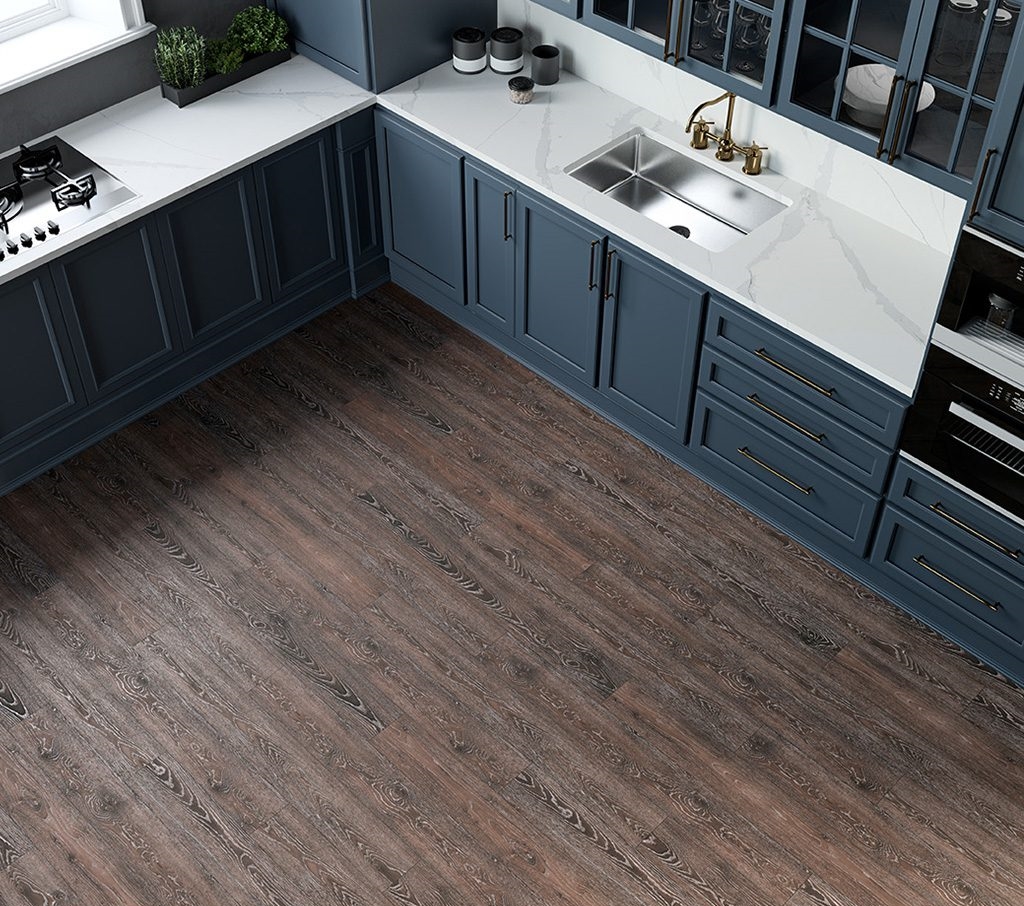
Luxury Vinyl Tile (LVT)
Luxury vinyl tile (LVT) stands out as one of the most sought-after and cost-effective flooring options for kitchens, and for several compelling reasons. First and foremost, LVT offers a vast array of colors, textures, and patterns, including striking wood and stone replicas. Its 100% water resistance and stain-proof properties make it highly desirable. With a price range of $9 to $11 per square foot, including installation, many homeowners find LVT an economical choice, especially since it’s DIY-friendly. However, one drawback of LVT lies in its durability; it does not boast the longevity of other flooring types and is prone to scratching and denting. Similar to engineered wood floors, LVT comprises multiple layers, including a wear layer, image layer, and core layers crafted from PVC and other plasticizers.
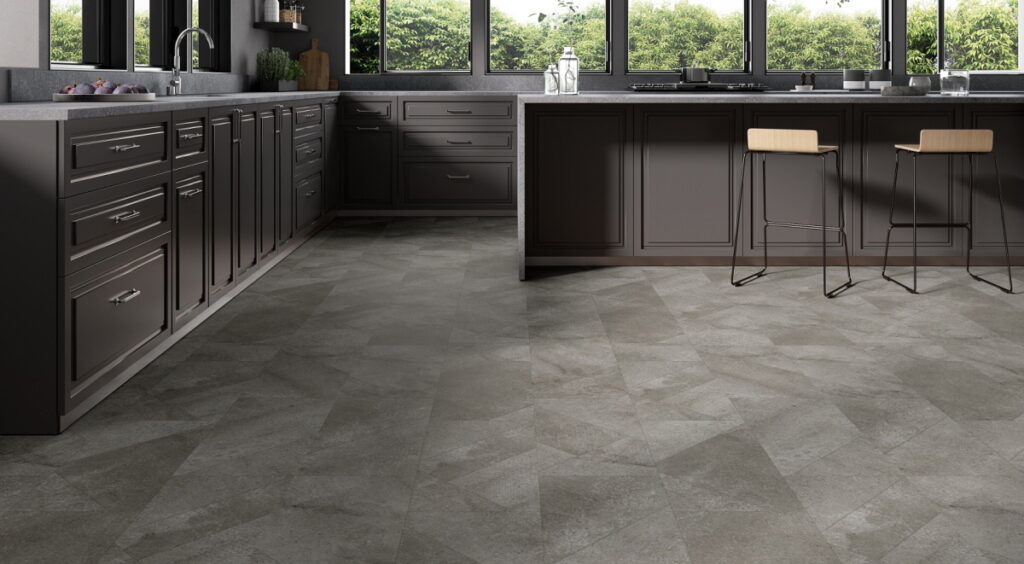
Laminate
Laminate flooring gained immense popularity upon its introduction due to its affordability, diverse designs, easy installation, and resistance to water. It’s an excellent choice for homeowners seeking the aesthetic of stone or hardwood floors without the hefty price tag. Laminate flooring typically ranges from $2.50 to $7 per square foot, and DIY installation can save you even more. Laminate’s flexibility allows for installation over uneven surfaces, unlike tile, wood, or vinyl planks, which demand a level subfloor. However, laminate floors necessitate more maintenance compared to other flooring types. Regular resealing is essential as foot traffic and consistent cleaning wear down the sealant, compromising water resistance. Selecting the right laminate floor is crucial, as not all variants are suitable for kitchen use.
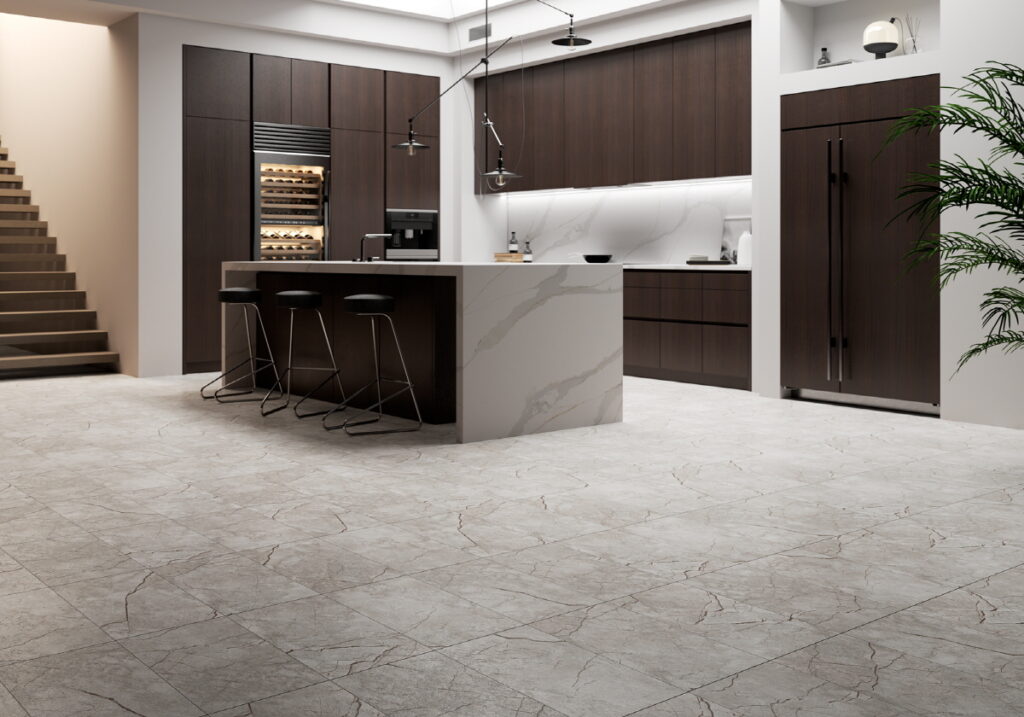
Cork
Cork stands out as one of the most environmentally friendly flooring options, crafted entirely from natural materials. Cork’s softness underfoot is a major draw for homeowners, offering relief from standing for extended periods in the kitchen. Despite its plush feel, cork is remarkably durable, long-lasting, and cost-effective compared to other eco-friendly materials. Priced between $3 and $7 per square foot, cork floors come in various colors and sizes to suit your kitchen’s aesthetic. However, selecting cork flooring comes with a few drawbacks. Exposure to direct sunlight may cause fading, and its spongy nature makes it prone to staining, which is not ideal for a kitchen floor susceptible to spills. Cleaning cork floors can also pose challenges due to its absorbent quality.
Concrete
Stained concrete is gaining popularity among homeowners, not only as a kitchen floor option, but throughout other areas of the home as well. These floors, once sealed, are nearly waterproof, making them an ideal choice for any kitchen. They offer versatility in styling, allowing you to achieve a unique look at an affordable price. However, concrete floors come with their share of drawbacks. As an extremely hard surface, concrete can be uncomfortable and cold, often leading to soreness in feet, joints, and backs after prolonged standing. Additionally, once the concrete has dried, altering the design would require significant intervention, potentially damaging the floor.
Tile
If you’re willing to invest, tile stands out as perhaps the best flooring option for your kitchen, due to its exceptional durability, water and scratch resistance, and diverse designs. When choosing tiles, you’ll encounter two main types: ceramic and porcelain. Both are crafted from clay heated and hardened at high temperatures, ensuring remarkable durability. However, porcelain, made from finer clays and fired at higher temperatures, surpasses ceramic in strength and resilience. Ceramic tiles, though softer and more porous, are still highly durable. Tiles are particularly favored in warm climates for their cool underfoot feel, as they do not retain heat like other materials. While tile prices range from $2 to $30 per square foot, their durability and longevity typically justify the cost. They boast complete water and stain resistance and are easy to clean and maintain. However, one notable downside, aside from their expense, is their tendency to become slippery when wet, posing a potential hazard in high-moisture areas like the kitchen.
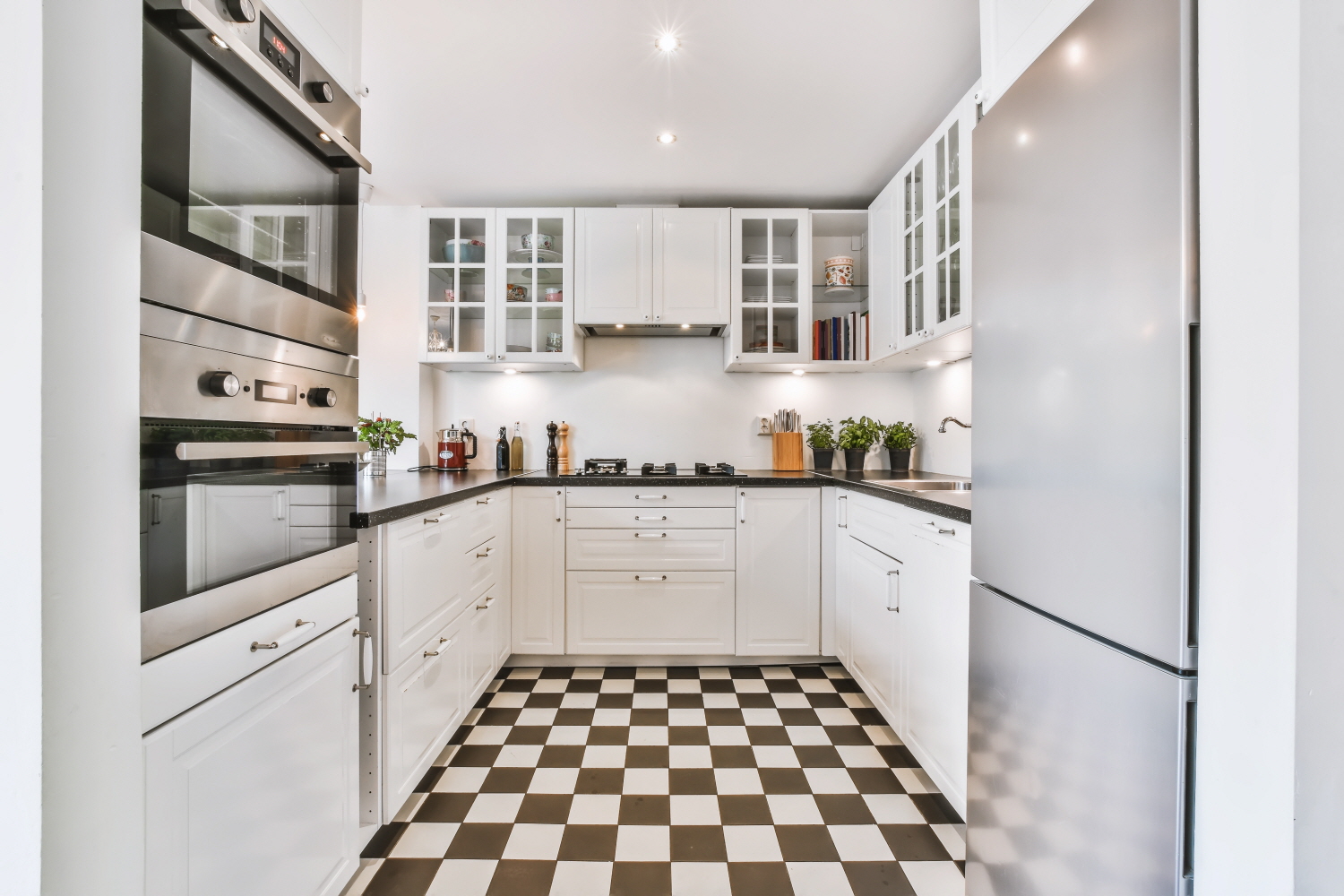
Linoleum
Linoleum, like cork, stands out as one of the most eco-friendly options on this list, offering affordability for budget-conscious homeowners at $2 to $12 per square foot. It’s a breeze to maintain, water-resistant, and durable, promising long-lasting longevity. Moreover, DIY installation is straightforward, with only a linoleum roller rental needed to save on costs. However, opting for linoleum flooring in your kitchen comes with its drawbacks. Linoleum is susceptible to punctures and tears from sharp objects like knives. Additionally, exposure to direct sunlight can cause fading or yellowing over time.
Worst Flooring for Kitchens
Each of the seven flooring options mentioned above presents significant advantages and disadvantages for kitchen use. However, there are a few flooring options you’ll want to steer clear of, including carpet and solid wood. Below, we’ll delve into each of these types of flooring and explain why they are not the ideal choices for your kitchen.
Carpet
While carpet may seem tempting due to its affordability, it’s far from an ideal flooring option for kitchens. The main issue lies in its difficulty to clean, especially when confronted with food, grease stains, and liquid spills, which are common occurrences in the kitchen. Moreover, carpets take a long time to dry out once they’ve become wet and soaked. Given that the kitchen is a high-traffic area, carpets tend to wear out quickly under constant use.
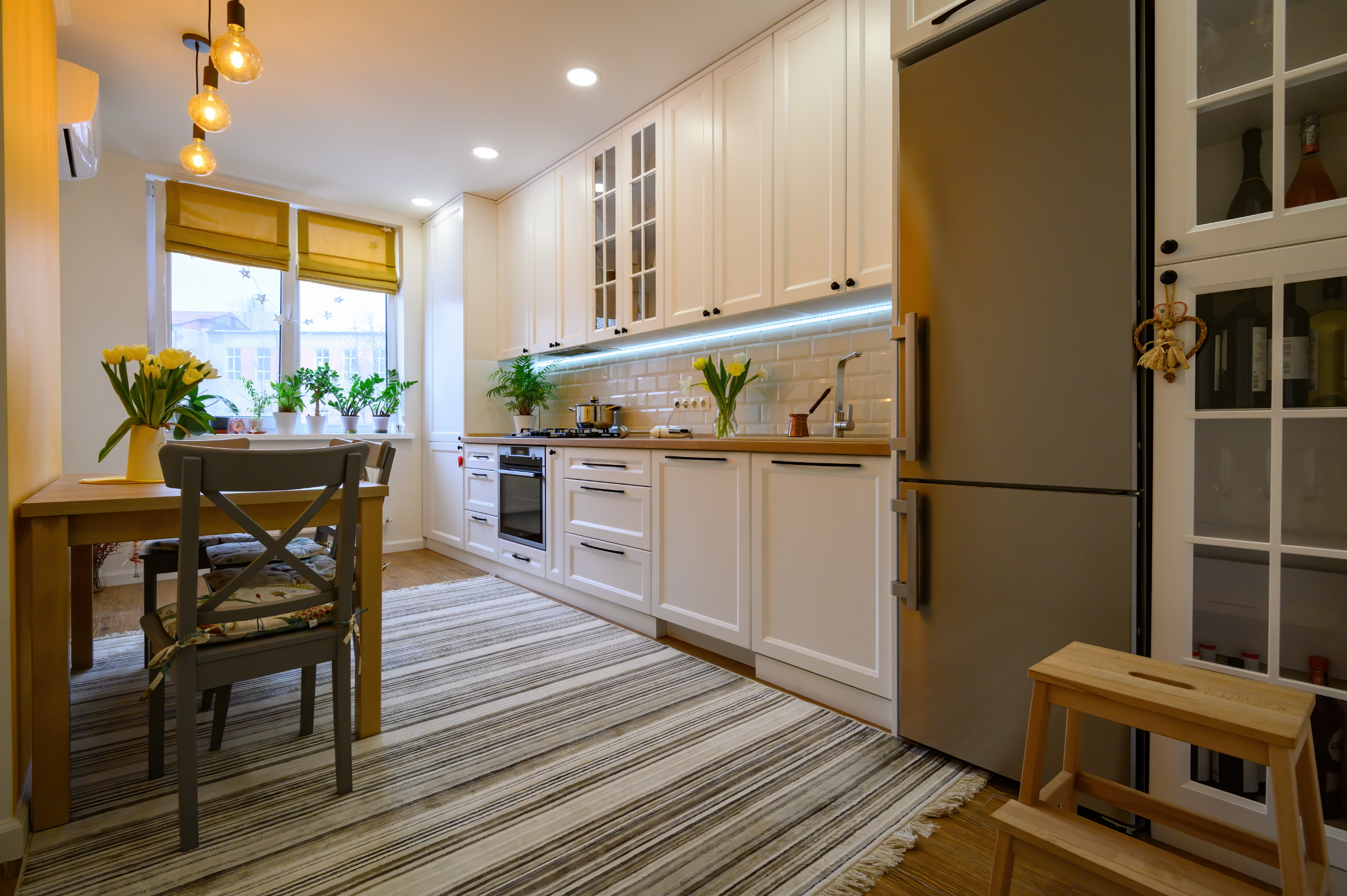
Solid Wood
As mentioned earlier in the discussion of engineered wood flooring, solid wood flooring is not an ideal option for kitchen use. This is primarily due to its tendency to expand and contract in response to moisture and temperature fluctuations, both of which are common occurrences in kitchens. This movement can result in the floor becoming warped and damaged by moisture over time.
Contact Us
Still undecided about which flooring option might best suit your home? LX Hausys is here to assist you! Our experts can guide you in selecting the kitchen floor that aligns with your unique requirements and budget. Simply reach out to us through the form on our website, and we’ll respond promptly. You can also explore all the flooring options available in our virtual showroom.

